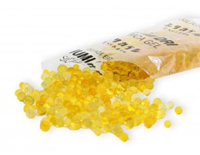
Posted to News on 21st Feb 2018, 00:00
Assured moisture protection in missile containers
Sensitive military electronics and electro-optic equipment need to be manufactured and stored in conditions where the impact of moisture is minimised. The sensitive components that make this technology so powerful are all located in the nose of the missile. This therefore becomes the part of the missile most affected by the presence of moisture.

Moisture protection has to be guaranteed in all the stages of the missile life, including manufacturing, storage and during military operations. Sophisticated military equipment is exposed to harsh operating conditions and it experiences extreme temperatures. Missile seekers have to function 24/7, 365 days a year in all climates, therefore the internal conditions have to be kept below the dewpoint to prevent a change of state. In some circumstances, if the temperature is very low, frost can form on the surfaces.
However, this is not the only cause. The presence of moisture in the air is hazardous also because the ambient temperature does not need to fall beyond the dewpoint temperature for this phenomenon to occur. When the equipment is exposed to the solar radiation, the temperature of the external surfaces increases but this does not result in a homogeneous warming up of all the surfaces. The consequence of different rate of heat transfer is this temperature difference, hence the ‘migration’ of moisture to the cooler components of the equipment. In fact, the formation of condensation or of small ice crystals on the lenses of the optics inside the head of the missile is caused by the difference between the temperature of the lenses and the temperature of the adjacent surfaces. The nose of the seeker acts as a window between the optics inside the missile and the target. Condensation on the lenses and mirrors of the seeker may blind the optics and obscure the target image, affecting the missile’s capability and efficiency.
When not in use, missiles are stored in specific containers. Desiccant bags are placed inside the missile container in order to create a benign environment for the weapon. If the missile has an open-frame configuration, the desiccation process takes place entirely inside the container. For this reason, Brownell developed ultra clean desiccant bags that have filtration efficiency ranging from 0.2 to 1 micron and can resist high and low temperature exposure.
A very dry environment will preserve the missile; hence Brownell always recommends using molecular sieves for the protection of optical equipment. Molecular sieves have a marked tendency towards moisture adsorption. In other types of missiles, the frame is sealed and the requirements are less demanding that the previous case. In this situation, desiccant bags can be filled with silica gel Envirogel instead, more economically convenient.
In both configurations, humidity indicators are recommended to easily check the humidity level inside the container and the saturation level of the desiccant inside the container.
Pressure build-up inside the container may occur as a consequence of diurnal temperature cycling or air transportation. This situation should be prevented by installing a two-way pressure valve on the container. The desiccant within the storage container is there to lessen the duty cycle on the missile internal desiccant solution. Therefore once on the rail and called into action, the seeker will not fail due to the effects of excessive moisture levels.
Unit 2, Abbey Road Industrial Park
Commercial Way, Park Royal
NW10 7XF
UNITED KINGDOM
+44 (0)208 965 9281






